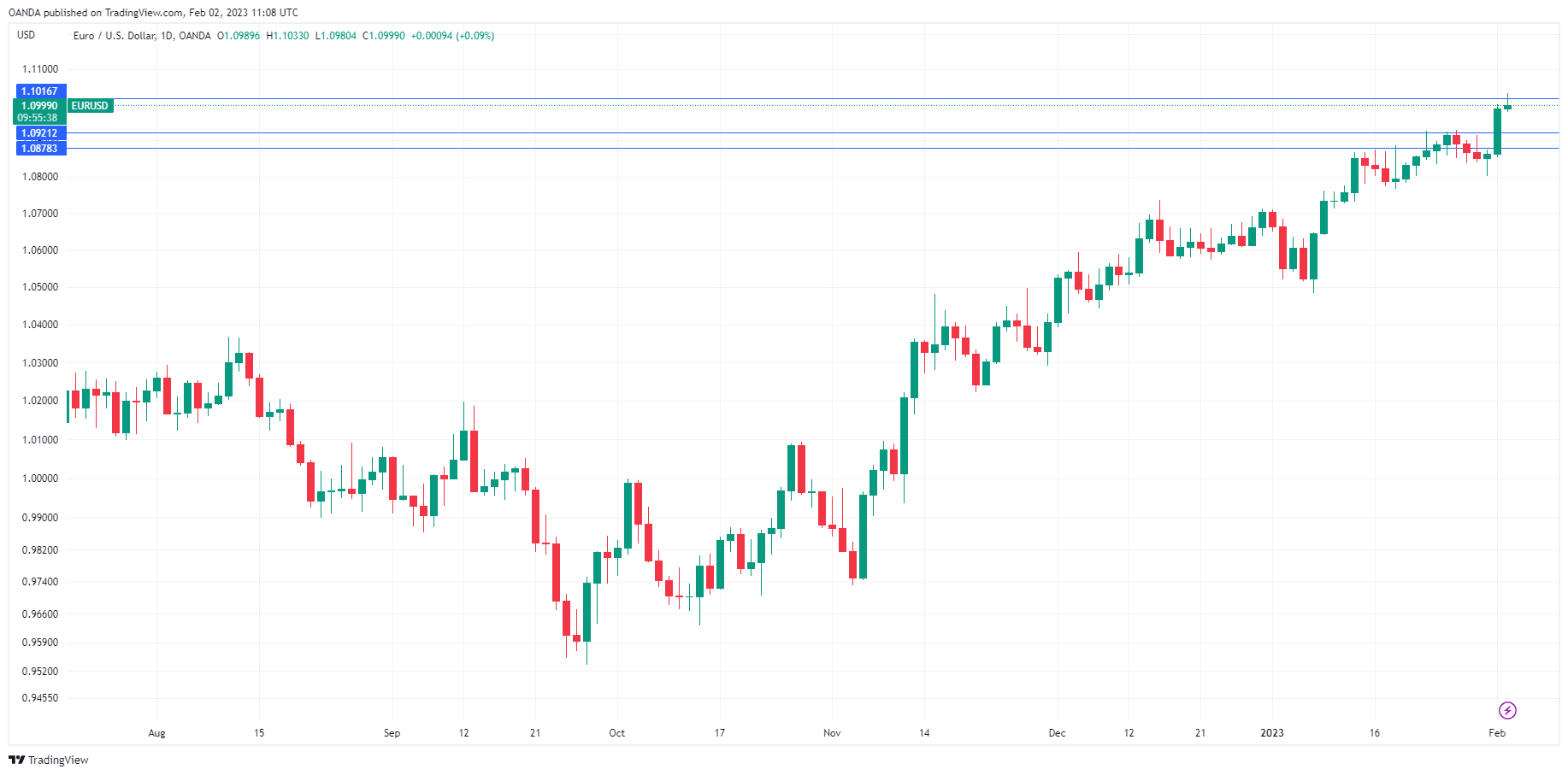The euro is catching its breath on Friday after some sharp swings over the past two days. EUR/USD is trading quietly at the 1.09 line.
Fed, ECB send euro on a wild ride
This week’s central bank rate announcements sent the euro on a roller-coaster ride. The Fed’s 25-basis point hike pushed the euro higher by 1.16%, while the ECB hike of 50-bp sent the euro down by 0.76%. The end result is that the euro is back to where it started the week, just below the 1.09 line.
The Fed rate decision sent the US dollar broadly lower, as investors were heartened by Jerome Powell saying that the disinflation process had begun and that he expected another couple of rate hikes before the current rate-hike cycle wrapped up. The markets are expecting inflation to fall faster than the Fed is thinking and are counting on some rate cuts this year, even though Powell said yesterday that he does not expect to cut rates this year. The markets were looking for a dovish bend to Powell’s remarks and once they found it, stocks went up and the US dollar went down.
The ECB meeting came a day after the Fed decision, and the rate hike of 50-bp was expected. Still, the euro fell sharply, perhaps due to a confusing message from the ECB. On the one hand, in its policy statement, the central bank signalled another 50 bp hike in March and kept the door open for additional hikes after March. At the same time, ECB President Lagarde said in a press conference that rate moves would be determined on a “meeting by meeting” basis seemed to veer away from the message in the policy statement. The ECB continues to have trouble communicating with the markets, which will only add to market volatility as investors try to figure out the central bank’s plans.
The week wraps up with the US employment report. The Fed has said that the strength of the labour market is a key factor in its rate policy, so today’s release could have a strong impact on the movement of the US dollar. Nonfarm payrolls fell from 256,000 to 223,000 in December and the downturn is expected to continue, with an estimate of 190,000 for January. The ADP payroll report showed a decline in December, but unemployment claims and JOLT job openings both moved higher, making it difficult to predict what we’ll get from nonfarm payrolls. The markets will also be keeping a close look at hourly earnings and the unemployment rate.
.
EUR/USD Technical
- 1.0921 is a weak resistance line, followed by 1.1034
- There is support at 1.0878 and 1.0826
Content is for general information purposes only. It is not investment advice or a solution to buy or sell securities. Opinions are the authors; not necessarily that of OANDA Business Information & Services, Inc. or any of its affiliates, subsidiaries, officers or directors. If you would like to reproduce or redistribute any of the content found on MarketPulse, an award winning forex, commodities and global indices analysis and news site service produced by OANDA Business Information & Services, Inc., please access the RSS feed or contact us at info@marketpulse.com. Visit https://www.marketpulse.com/ to find out more about the beat of the global markets. © 2023 OANDA Business Information & Services Inc.



